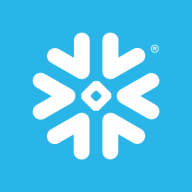

Actian Ingres and Snowflake are competing data management solutions, each offering unique strengths. Snowflake appears to have a competitive edge due to its advanced features and superior scalability, justifying its higher price point.
Features: Actian Ingres provides a highly secure architecture, solid transaction processing capabilities, and valuable cost-effective options. Snowflake, on the other hand, offers a cloud-native architecture, seamless integration across diverse data ecosystems, and exceptional performance for complex analytical queries. Snowflake's focus on cloud innovation contrasts with Actian Ingres’ emphasis on on-premise stability.
Ease of Deployment and Customer Service: Snowflake's cloud-centric deployment model supports rapid implementation with minimal infrastructure concerns and efficient customer service for cloud-specific issues. Actian Ingres offers established on-premise installation processes and comprehensive customer support for traditional setups, but it may not match Snowflake's agility and responsiveness in dynamic cloud environments.
Pricing and ROI: Actian Ingres offers predictable setup costs, suitable for budget-conscious strategies, and potentially quicker ROI for on-premise environments. Snowflake's usage-based pricing model aligns costs with scale, providing value as data needs grow, though it requires a higher initial investment. Snowflake's flexible cost structure aligns with its extensive scalability, whereas Actian Ingres focuses on cost management for on-premise solutions.

Actian’s Ingres is a leading, enterprise-grade database management system designed to reduce IT costs and time-to-value, while delivering the strength and features expected from an enterprise-class database. Ingres 10.2 is the latest version of the database, containing enhancements that will make it easier to internationalize customer applications. Along with improved performance and reduced configuration overhead, users can take their first steps into big data analytics with the new Window functions.
Snowflake is a cloud-based data warehousing solution for storing and processing data, generating reports and dashboards, and as a BI reporting source. It is used for optimizing costs and using financial data, as well as for migrating data from on-premises to the cloud. The solution is often used as a centralized data warehouse, combining data from multiple sources.
Snowflake has helped organizations improve query performance, store and process JSON and XML, consolidate multiple databases into one unified table, power company-wide dashboards, increase productivity, reduce processing time, and have easy maintenance with good technical support.
Its platform is made up of three components:
Snowflake has many valuable vital features. Some of the most useful ones include:
There are many benefits to implementing Snowflake. It helps optimize costs, reduce downtime, improve operational efficiency, and automate data replication for fast recovery, and it is built for high reliability and availability.
Below are quotes from interviews we conducted with users currently using the Snowflake solution:
Sreenivasan R., Director of Data Architecture and Engineering at Decision Minds, says, "Data sharing is a good feature. It is a majorly used feature. The elastic computing is another big feature. Separating computing and storage gives you flexibility. It doesn't require much DBA involvement because it doesn't need any performance tuning. We are not doing any performance tuning, and the entire burden of performance and SQL tuning is on Snowflake. Its usability is very good. I don't need to ramp up any user, and its onboarding is easier. You just onboard the user, and you are done with it. There are simple SQL and UI, and people are able to use this solution easily. Ease of use is a big thing in Snowflake."
A director of business operations at a logistics company mentions, "It requires no maintenance on our part. They handle all that. The speed is phenomenal. The pricing isn't really anything more than what you would be paying for a SQL server license or another tool to execute the same thing. We have zero maintenance on our side to do anything and the speed at which it performs queries and loads the data is amazing. It handles unstructured data extremely well, too. So, if the data is in a JSON array or an XML, it handles that super well."
A Solution Architect at a wholesaler/distributor comments, "The ability to share the data and the ability to scale up and down easily are the most valuable features. The concept of data sharing and data plumbing made it very easy to provide and share data. The ability to refresh your Dev or QA just by doing a clone is also valuable. It has the dynamic scale up and scale down feature. Development and deployment are much easier as compared to other platforms where you have to go through a lot of stuff. With a tool like DBT, you can do modeling and transformation within a single tool and deploy to Snowflake. It provides continuous deployment and continuous integration abilities. There is a separation of storage and compute, so you only get charged for your usage. You only pay for what you use. When we share the data downstream with business partners, we can specifically create compute for them, and we can charge back the business."
We monitor all Data Warehouse reviews to prevent fraudulent reviews and keep review quality high. We do not post reviews by company employees or direct competitors. We validate each review for authenticity via cross-reference with LinkedIn, and personal follow-up with the reviewer when necessary.